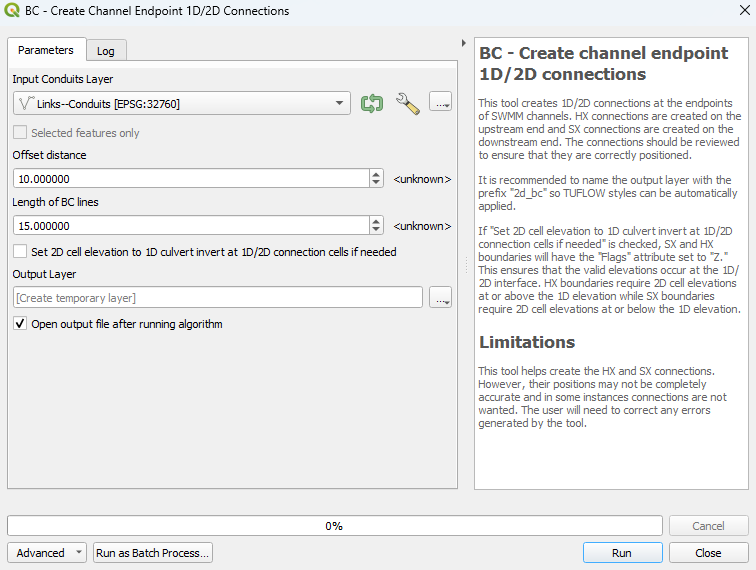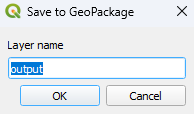QGIS SWMM BC Create Channel Endpoint 1D/2D Connections
Introduction
This tool creates 1D/2D connections at the endpoints of SWMM channels. HX connections are created on the upstream end and SX connections are created on the downstream end.
Note: The positions of the HX and SX connections may not be completely accurate, so it is recommended for the user to check the output.
Usage
This tool, BC - Create channel endpoint 1D/2D connections, can be found in the QGIS processing toolbox panel under 'TUFLOW > SWMM'. To open the Processing Toolbox Panel, navigate to 'Processing' in the menubar and select 'Toolbox'.

Parameters
- Input Conduits Layer: The conduits layer to which the 1D/2D connections will be made.
- Offset distance: Distance from the channel endpoint to the midpoint of the BC line.
- Length of BC lines: As the name suggests.
- Set 2D cell elevation to 1D culvert invert at 1D/2D connection cells if needed: If this is checked on, SX and HX boundaries will have the "Flags" attribute set to "Z." This ensures that the valid elevations occur at the 1D/2D interface. HX boundaries require 2D cell elevations at or above the 1D elevation while SX boundaries require 2D cell elevations at or below the 1D elevation.
- Output Layer: Determines the location and filename of the output file. Details on the options are below.
- Output Options:
- For each of the following options, the tool will output a new layer and won't override any existing files.
- Note: It is recommended to name the output layer with the prefix 2d_bc so TUFLOW styles can be automatically applied.
- Create Temporary Layer:
- Creates a temporary scratch layer. This layer will open into the QGIS workspace but it will not be saved anywhere.
- Create Temporary Layer:
- Save to File...:
- The user can navigate to a folder and save the layer to a new GeoPackage Database.
- Save to File...:
- Save to GeoPackage...:
- The user can navigate to an existing GeoPackage Database. Once selected, a 'Layer Name' dialog will appear. Enter the new layer name, and the new layer will be saved as that name in the GPKG.
- Save to GeoPackage...:
- Save to Database Table...:
- ???
- Save to Database Table...:
- Append to Layer...:
- ???
- Append to Layer...:

Example
| Up |
|---|

